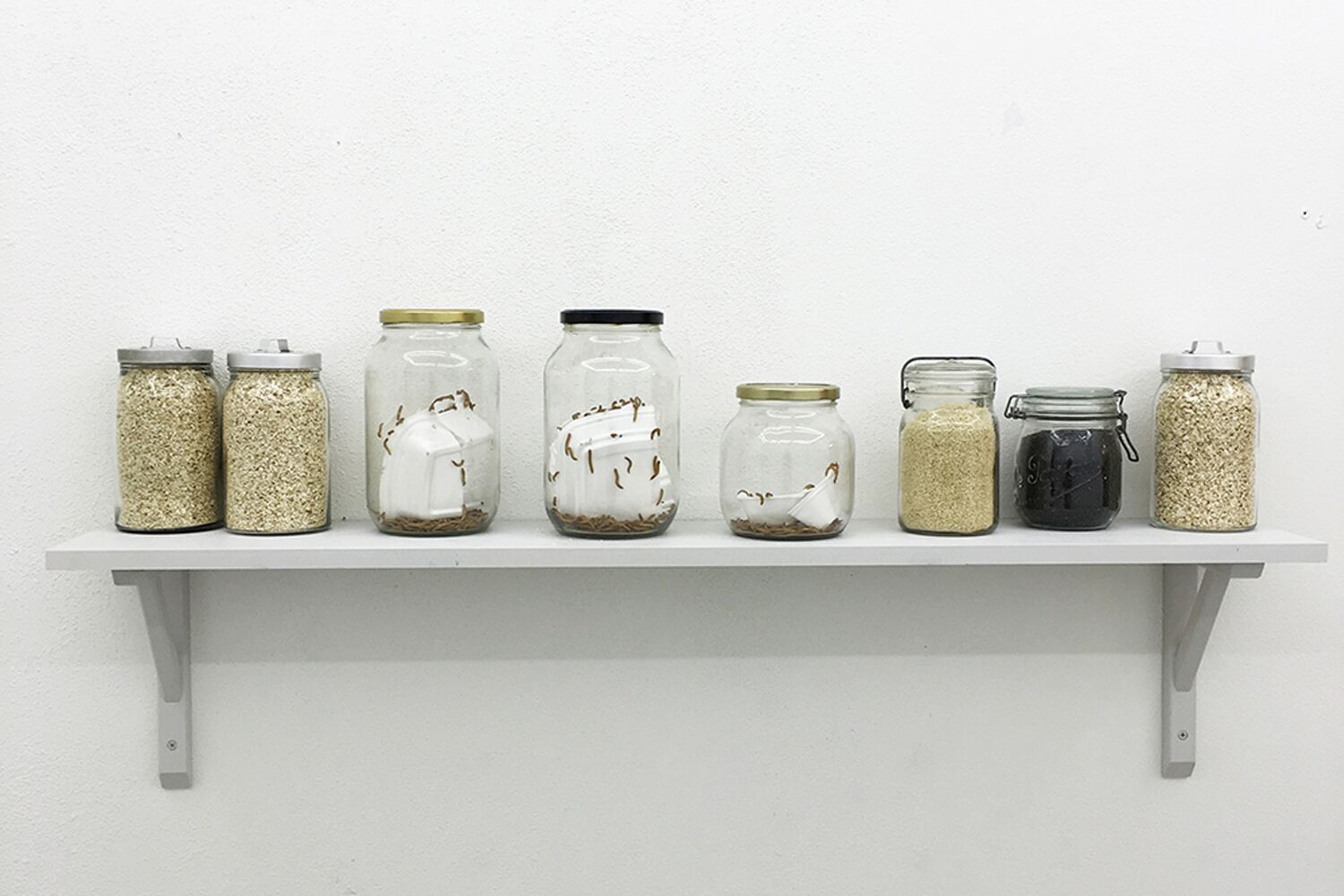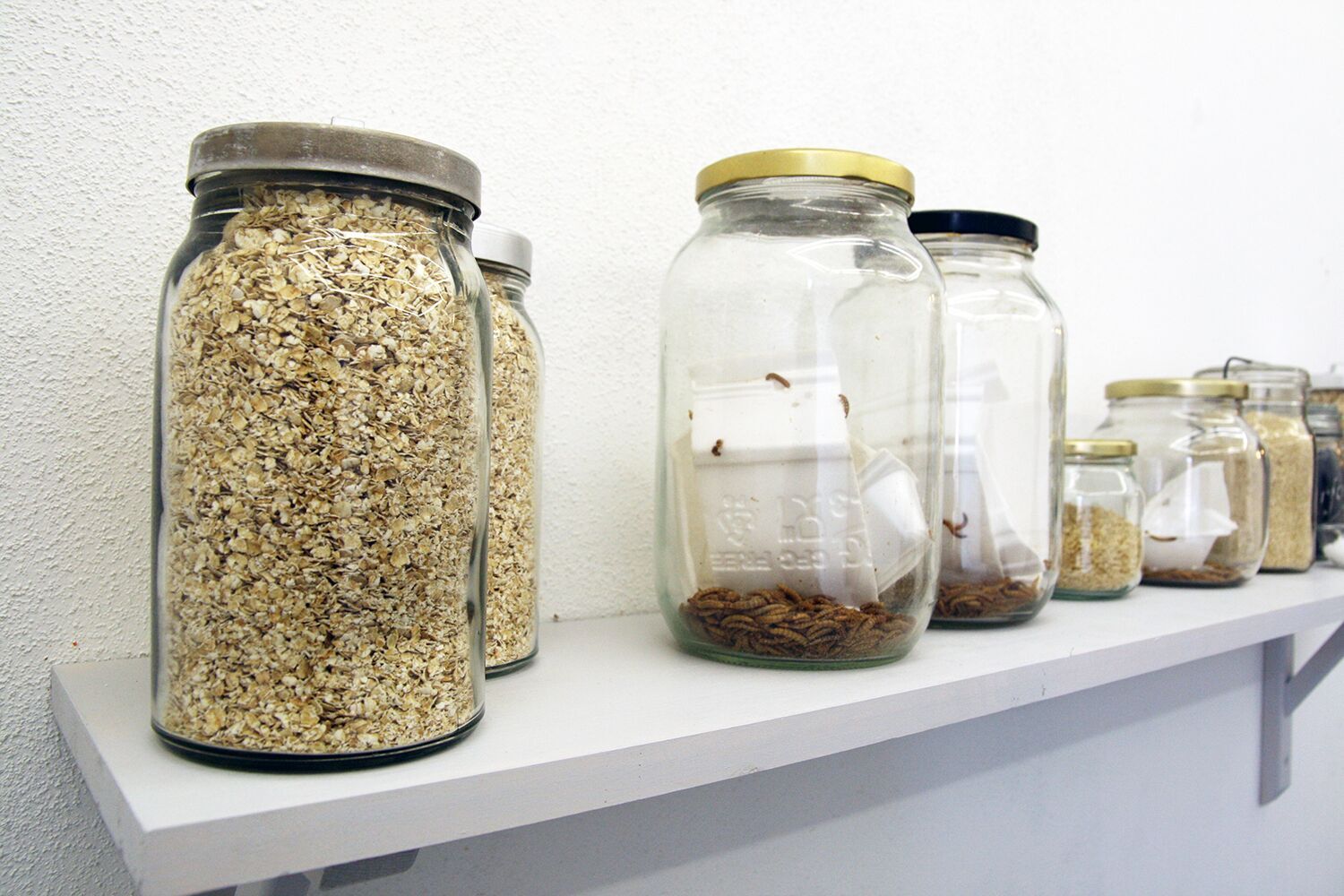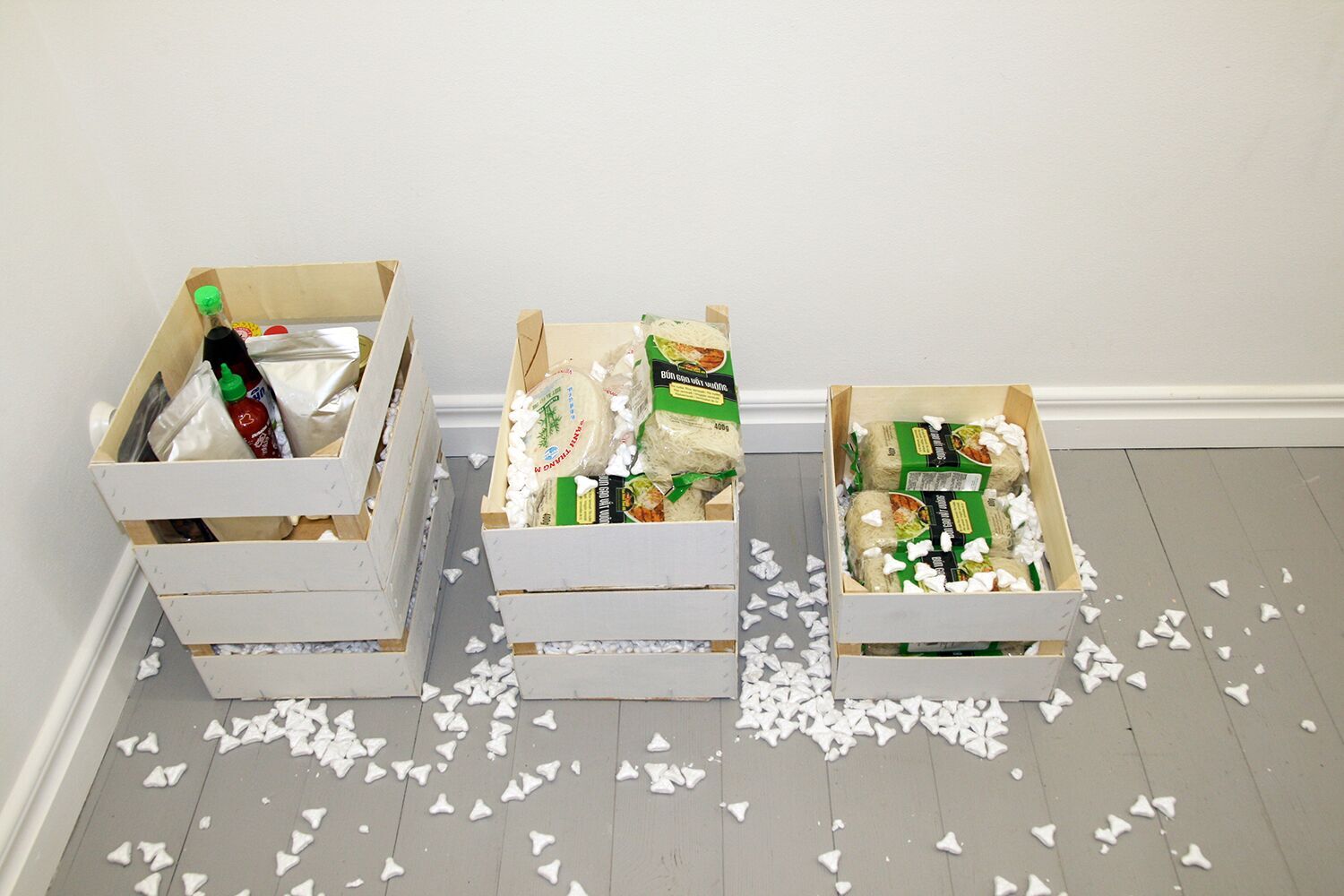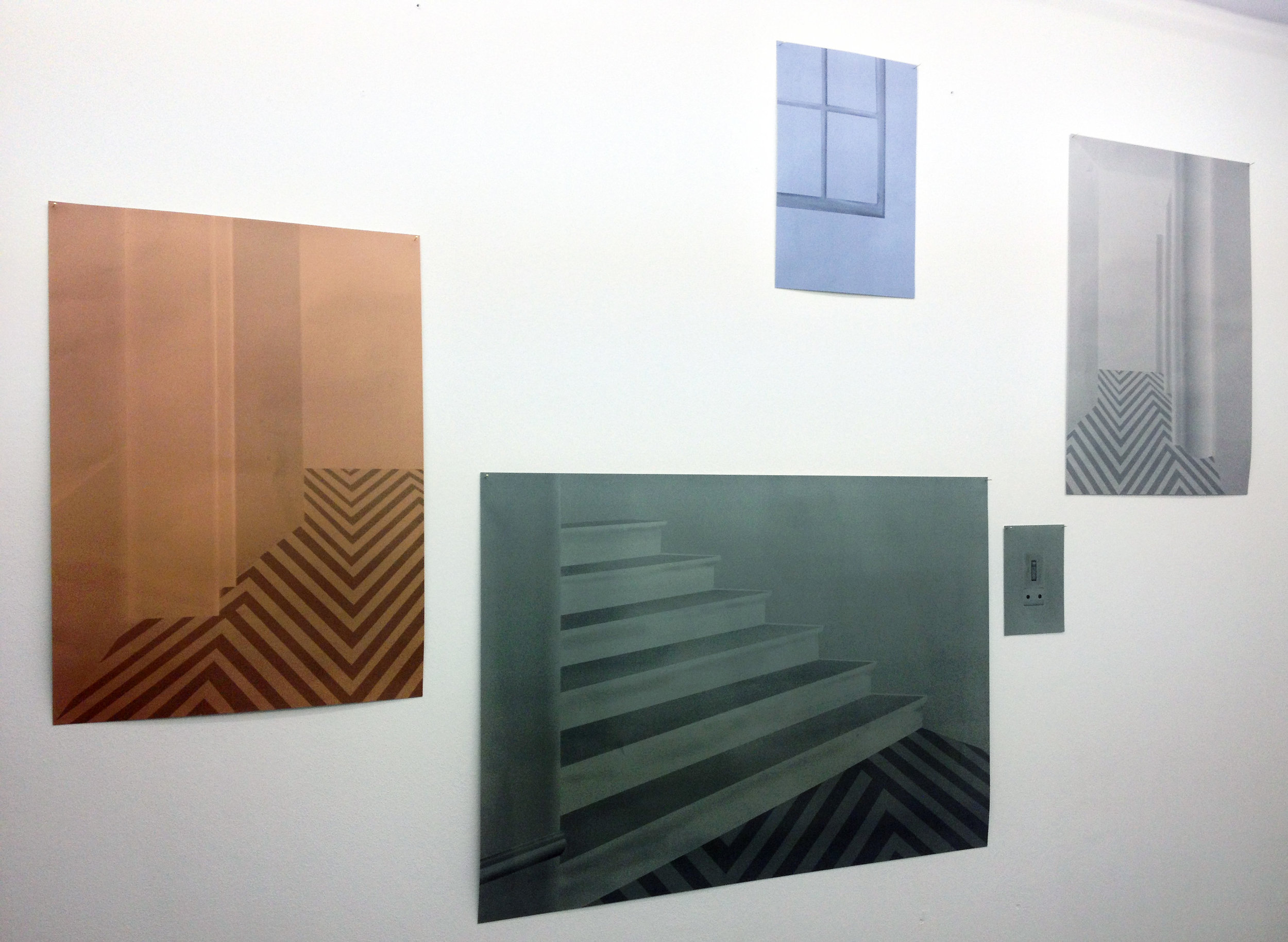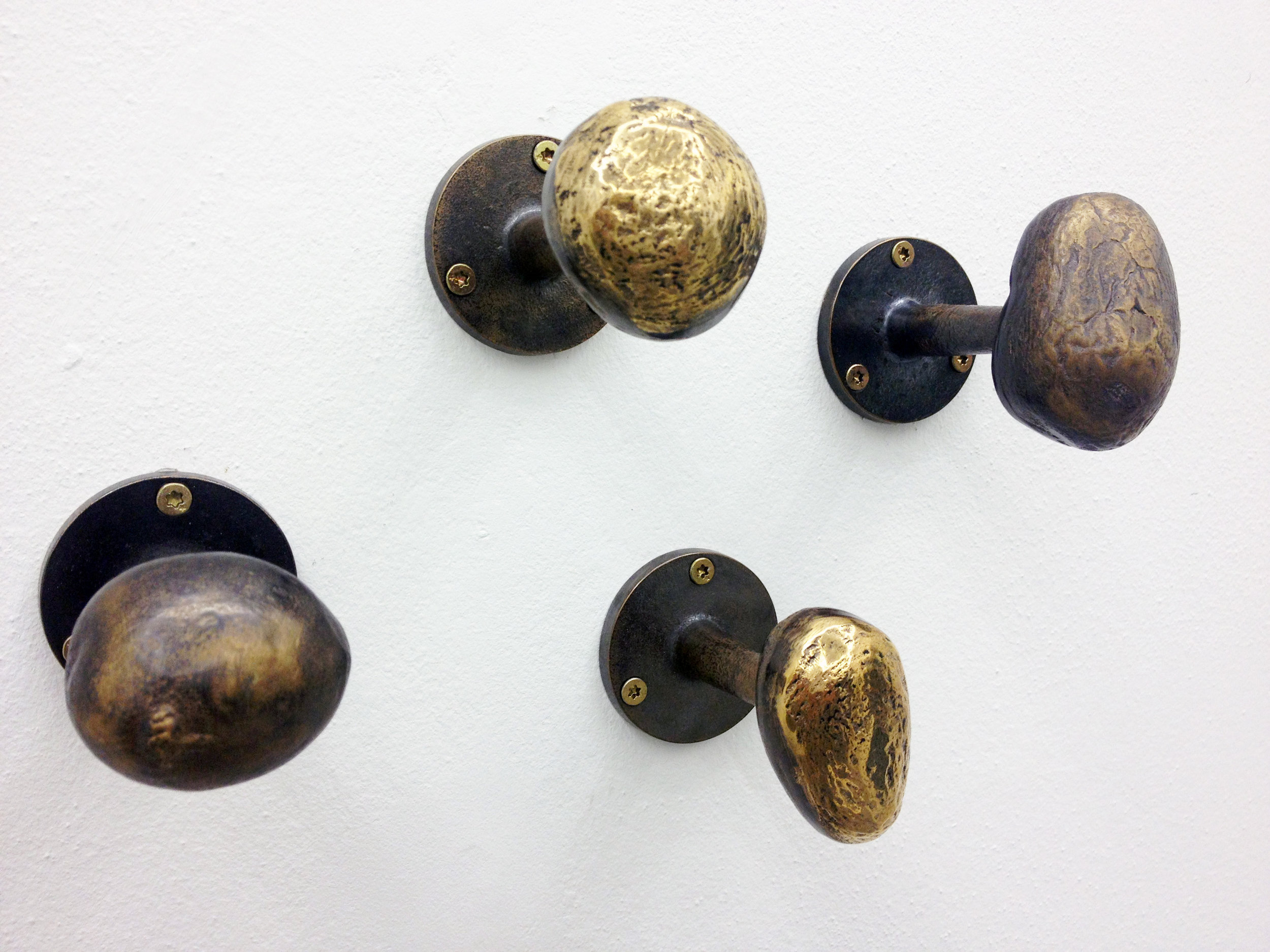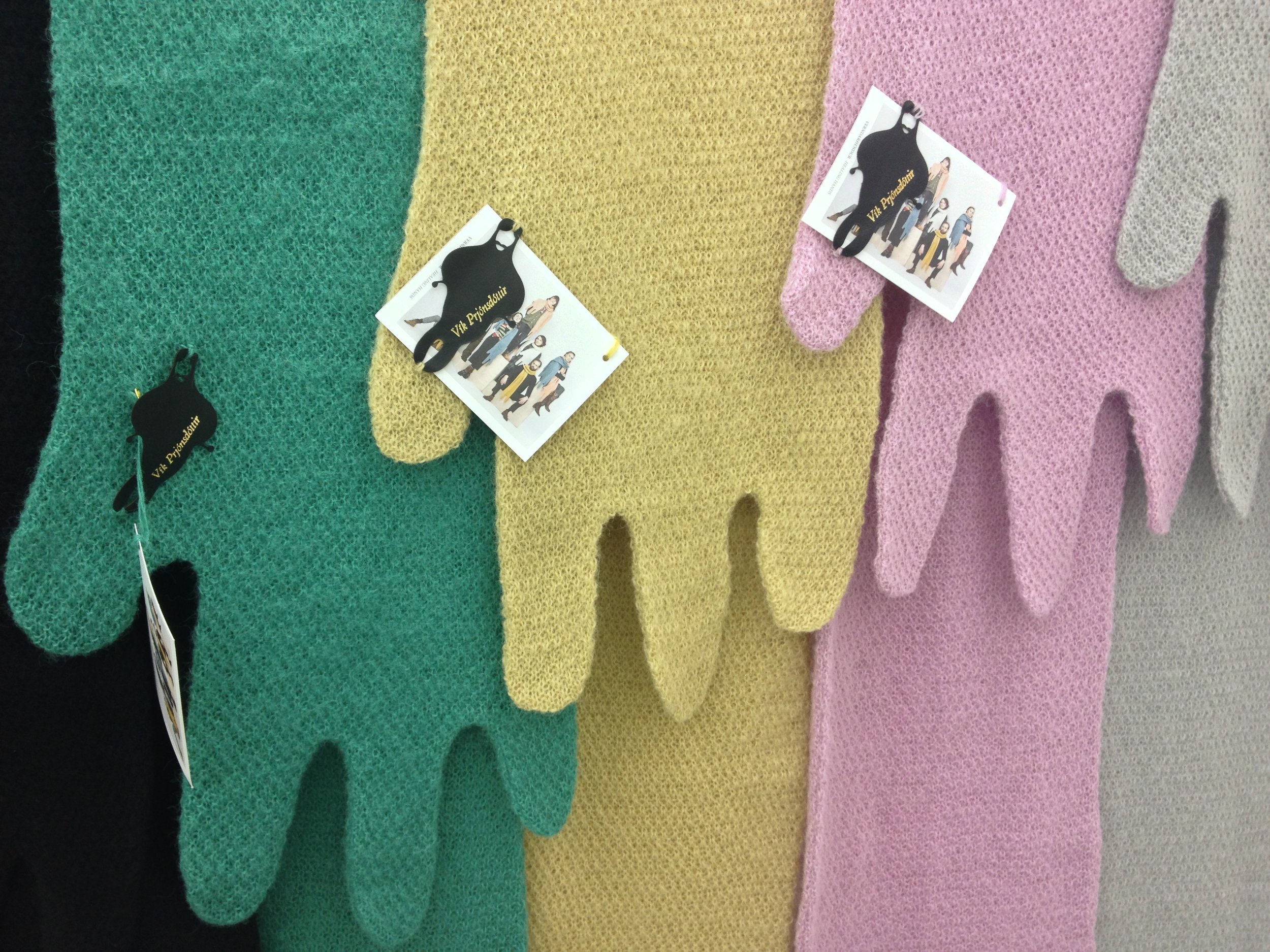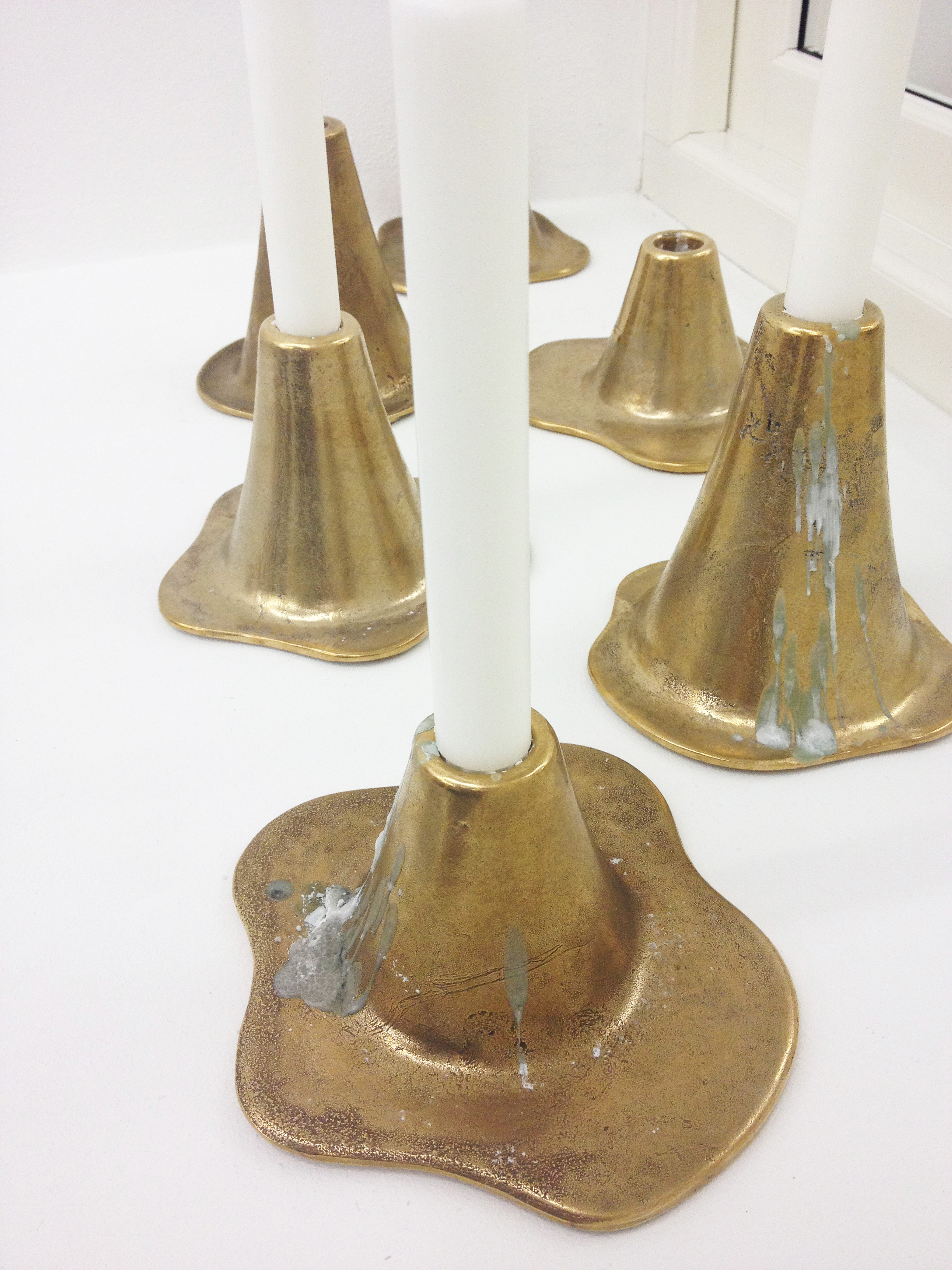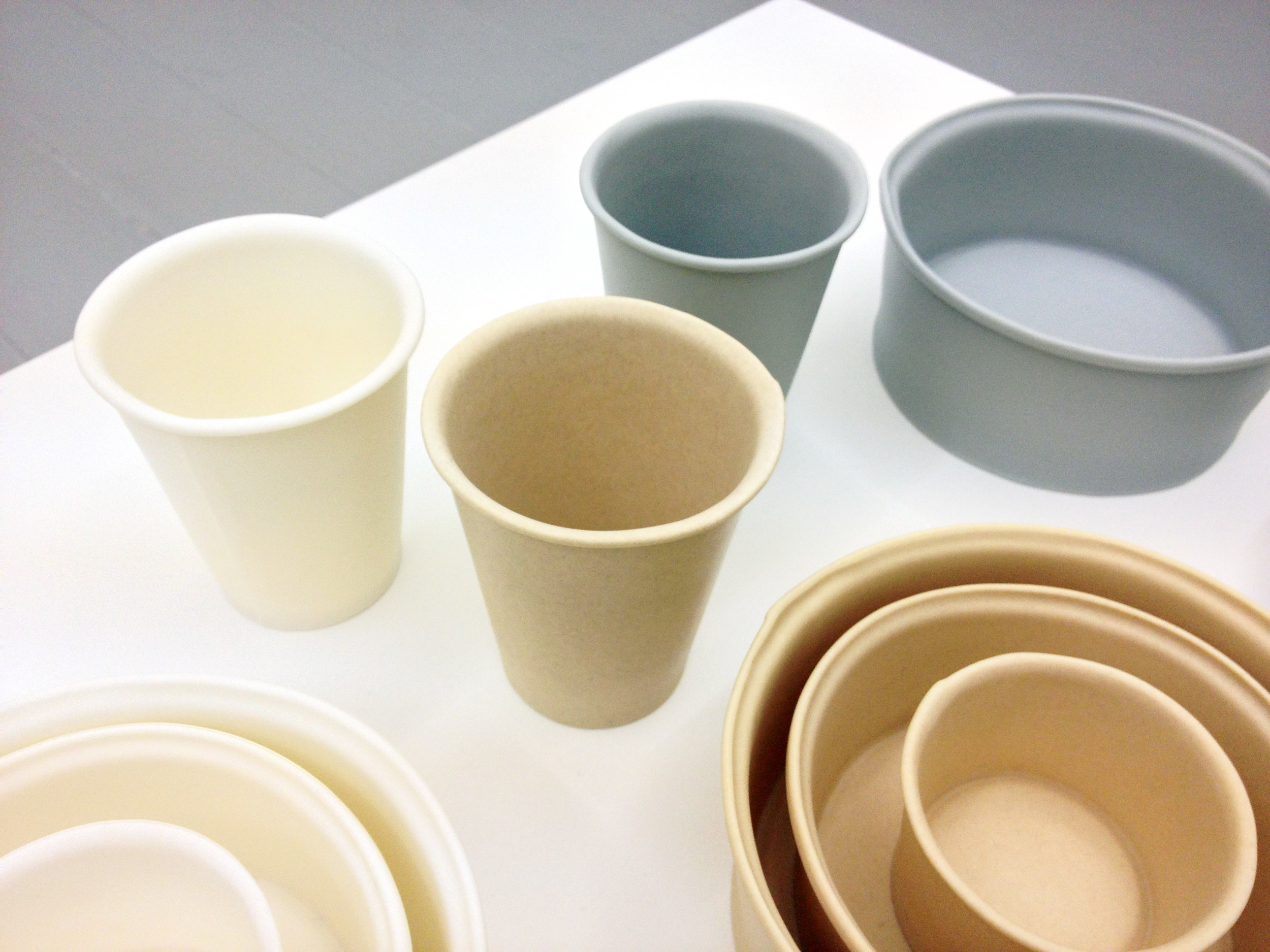
Gallery
Petra Lilja Design Gallery is the first gallery dedicated to contemporary design in the south of Sweden. Located in the home of curator Petra Lilja between 2013-2017, the idea was to challenge the norms of the white cube, where and how art and design is disseminated. The choice of artists and designers was always grounded in the interesting stories behind the person/s and produced in a collaborative way. The year-long program Research in the Gallery - materially, verbally and in action juxtaposed design research with the exposure of the gallery and the domesticity of the location.

FICTIONING
Researchers: Ola Ståhl and Sara Hyltén-Cavallius
Main workshop: Saturday, December 3, 1-5pm. Sign up: gallery@petralilja.se
Exhibition: Opening, Sunday, December 4, 4pm – 6pm.
Optional: Collection of sounds around Kirseberg, Friday December 2nd, starting at 7pm
Continuation of workshop: Sunday December 4t, a 10am-4pm
This workshop is an exercise in attentiveness considered a potential opening towards the development of new aesthetic sensibilities and fictional universes. Working across different senses and media, participants create a series of fictions based on the encounter with the local environment in Kirseberg. Exploring notions of collaborative fictioning, sounds recorded in Kirseberg are turned into interwoven sketches and fragments of narrative. The result will be compiled into an artist book and left on display in the gallery.
Artists’ Books. Taking the notion of the artists’ book as a point of departure and exploring the social and collaborative dimension of book making, the material assembled in the workshop during Saturday will be turned into an unique publication exhibited in the gallery during Sunday. If you can’t attend all days, we suggest to prioritise the full workshop on Saturday. To sign up, please e-mail gallery@petralilja.se Naturally, you are welcome to the opening on Sunday December 4th at 4-6pm! No signing up needed.
Ola Ståhl & Sara Hyltén-Cavallius are researchers at the Department of Design, Linnaeus University. They share an interest in exploratory practices and creative-critical expression in and across various media and disciplines. Sara Hyltén-Cavallius core concern is to make the world a better place for living creatures, through social and sustainable design. Sara has a background as an architect and is now the head of the department of design at Linnaeus University. Ola Ståhl has got a background in art theory and cultural studies with a PhD from The University of Leeds. Alongside his engagement in critical and theoretical research, he has worked as a practicing artist and creative writer for many years. He usually works collaboratively. ola.stahl@lnu.se / sara.hyltén-cavallius@lnu.se
HOME CRAFTING
Researcher: Johanna Rosenqvist
Craft conversations: Saturday October 8th, 1-4 pm
The Swedish Home Craft Movement was initiated as an initiative launched more than 111 years ago by women to rescue rural crafts in Sweden. The designation “home craft” functioned as a code word signaling that this was an initiative intended for women, as implied by its construction from the terms for “home” (hem) and “craft” (slöjd), which latter was, in this connection, considered a part-time production activity. In what homes does this kind of production still go on today? Johanna invites makers to participate in craft conversations.
Johanna Rosenqvist has been researching art and craft making since the turn of the millennium. She published her thesis on the Home Craft Movement as an art scene in 2007 and now teaches the History & Theory of Craft at Konstfack in Stockholm.
johanna.rosenqvist@klaustrostudio.com
Link to the full program (fall 2016)
Link to the previous program (spring 2016)
Odlingen / The Cultivation
Researcher/artist: Gunnel Pettersson
OPENING: September 4th, 1-4 pm
Open by appointment during Sundays, September 11th-25th, 1-4 pm
To expand the understanding of the rural-urban as connected public spaces; do we need a next generation of guerrilla gardening also in the rural area? Who owns the rural landscape? The activities in the exhibition space are based on interventions and processes taking place since 2007 under the umbrella of Odlingen/The Cultivation. Odlingen/The Cultivation is an interdisciplinary project using buckwheat as a source of inspiration and initiating cultivation of buckwheat in the south-eastern part of Sweden. Art is a space for experiments and reflections – art can provide preconditions for conversations and start interactions on subjects. In this case hopefully on aspects of cultivation as concrete realities as well as abstractions of our existence.
Gunnel Pettersson is an artist and senior lecturer at the School of arts and Communication (K3) at Malmö University. gunnel.pettersson@odlingen.org, www.odlingen.org
Metadesigning new socio-material relationships
Researcher: Mathilda Tham
WORKSHOP and TALK: MAY 28TH, 1-4PM
EXHIBITION: MAY 29TH-JUNE 12TH, Sundays NOON-4 PM
This talk/workshop explores how design can intervene directly at the level of mindsets and paradigms, by using ’languaging’. The word ’snippa’ made the female genitals ’talk-aboutable’ in Sweden, and the word ’genocide’ it possible to prosecute against athrocities directed at whole populations. What words can we co-design to promote genuine futures of sustainability? Why, and how is this a pursuit for design and designers? This session draws on hands-on examples and is a participatory activist new-languaging event.
Mathilda Tham’s research sits in a positive, creative and activist space between design, future studies and sustainability. The main aim of the research is futures of sustainability with a broad definition of sustainability that recognizes and celebrates the complex interplay of cultural, social, economic and ecological dimensions. A central question is “how do we live our lives together? Mathilda is a co-founder of Metadesign Research Unit at Goldsmiths, University of London and Professor in Design at Linnaeus University.
Design encounters with non-human others
Researchers: Li Jönsson and Tau Ulv Lendskjold
WORKSHOP and TALK: APRIL 23RD, 1-4 PM
EXHIBITION: APRIL 24TH-MAY 22ND, Sundays NOON-4 PM
In this workshop and talk we will explore how to create new relations with non-human others, more specifically birds in the local area of Kirseberg. During the workshop the participants will make Bird-Cams to explore the notion of exchanges between the different actors in our shared urban space. The Bird-Cams can be described as a DIY version of the National Geographic’s critter-cams, which allow us to see footage from the exotic worlds of animals. However, the Bird-Cams that we will make during this Saturday are far from high-tech critter-cams -they are made from of the shelves components. They are also far from exotic – instead of studying ‘others’, they are meant to allow birds and humans who share the city for living to come together differently.
In the exhibition space the Bird Flute will be exhibited – an instrument made to explore communication as translations between species. When blowing into the instrument the sound conducted by humans become translated into non-human message. The sound created by the flute is then transmitted via a digital network to a small speaker placed outside.
Li Jönsson works at the intersection of design and science and technology studies (STS). In her interdisciplinary approach to design she engage a diverse set of critical and practical ideas; in her PhD work she demonstrates how we can move beyond the anthropocentric positioning of design by linking more recent materialist approaches with practices of design/making.
Tau Ulv Lenskjold is postdoc fellow at University of Southern Denmark, Department of Design and Communication, and holds a PhD in Interaction Design. His current research follows two avenues: The first investigates how speculative design practices engage with political and societal issues. The second avenue concerns a post–anthropocentric re-articulation of design by means of experimental and interventionist modes of investigation.
Together, the two researchers have developed the explorative design research project Urban Animals & Us that we will introduce you to during the workshop/talk.
Images from bird cams:
Images from bird cam workshop:
Images from bird flute installation:
EntomoThings
Researchers: Zeenath Hasan and Cris Argüelles
OPENING: MARCH 20TH, 1-4 PM
EXHIBITION: MARCH 20TH-APRIL 17TH, Sundays NOON-4 PM (Please note: closed for Easter, Sunday March 27th)
Entomophagy or the practice of eating insects is seen as two worlds colliding. An essential dichotomy of nature – culture is drawn causing a living off, rather than a living with, across this divide.
EntomoThings is a proposal materialised with the help of Barad’s ‘agential cut’. The exhibition offers a construction of the everyday as a speculative glimpse of that which is excluded in the interaction between humans and insects. Visitors can cook and eat at the DIY Pesto Bar which will be open every Sunday as part of the exhibition EntomoThings. EntomoThings is a collaboration between Zeenath Hasan, architect Cris Argüelles and with students from KEA, Københavns Erhvervsakademi. Cris Argüelles is co-founder of blast!arch; a creative studio inspired by the intersection of digital, design and
architecture.
Worms at the Table
WORMS AT THE TABLE
DISCUSSION and TASTING MENU: MARCH 4TH, 5-7 PM
Design researcher Zeenath Hasan will engage with a potential resource related to the specific configuration of composting plastics exhibited in the gallery space: common mealworms as a food source for humans. Worms at the Table offers opportunities for an expanded notion of the edible and as a pragmatic exploration of self-cultivated protein source. The tasting menu is offered as part of the discussion session with design researchers Åsa Ståhl and Kristina Lindström, whose installation Composting Plastics can be viewed in the gallery space.
We will serve:
Fresh spring rolls with garlic roasted mealworm
Ricotta parfait with granola and sweet mealworm dukkah
The event and food is free.
Note: If you are allergic to shellfish, then insect eating is not for you.
The mealworms are sourced from a restaurant food supplier in Copenhagen
Limited space, to participate in the event register by e-mail to info@misplay.se + gallery@petralilja.se
COMPOSTING PLASTICS
Researchers: Kristina Lindström and Åsa Ståhl
OPENING: FEBRUARY 21ST, 1-4 pm
EXHIBITION: FEBRUARY 21ST -MARCH 6TH, Sundays NOON-4 PM
Recent research has shown that common meal worms can biodegrade Styrofoam. In the artistic research project HYBRID MATTERs Kristina Lindström and Åsa Ståhl explores how this new discovery might influence how we will live with or without plastics in the future. How does composting intervene in the temporality and materiality of plastics? What potential transformations, issues, relations and resources could emerge through composting plastics?
A prototype for composting plastics in a domestic setting is exhibited in the gallery space. During the exhibition common meal worms will transform disposable Styrofoam products such as containers for takeaway food and protection for shipping goods, into materials that could be used as soil.
Kristina Lindström and Åsa Ståhl are designers and researchers at Malmö University and Umeå University. This is as part of the artistic research project HYBRID MATTERs, where they explore matters, in its double meaning, that emerge in a digital age: www.hybridmatters.net
Movie
Composting Plastics is the first event in the Seminar Series DESIGN RESEARCH IN THE GALLERY: MATERIALLY, VERBALLY AND IN ACTION. The series will run through out the year 2016 involving at least 12 researchers within design, arts and architecture. The invited researchers will do talks, workshops, installations or activist-events open to the public. By facilitating these meetings the aim is knowledge making and creative exchange between the participants / visitors.
Invited researchers includes: Kristina Lindström, Åsa Ståhl, Zeenath Hasan, Cris Argüelles, Li Jönsson, Tau Ulv Lenskjold, Mathilda Tham, Gunnel Pettersson, Johanna Rosenqvist, Ola Ståhl and Sara Hyltén-Cavallius.
Link to program here.
Funded by Petra Lilja Design Gallery, the researchers and Linnaeus University.
Kosmos Project
Kosmos Project is a design studio, based in Warsaw, Poland, set up by Ewa Bochen and Maciej Jelski. In philosophy, cosmos is an orderly or harmonious system, the opposite of chaos. That´s where the name of the group originates. Kosmos Project´s inspiration comes from observation of relationship between the civilized and the wild. The two designers believe that these two separate worlds can coexists harmoniously. Their design approach is built on the conviction that our environment determines our attitudes. From this point of view the way design objects are created is very important. Things that surrounds us have great impact on our behavior and relations. It doesn’t only concern the physical part of our being, but also, and maybe mainly, the mental aspect. The designers strongly believe that modern design needs to focus on human spirituality as the way to break with dehumanized life. Each project is meticulously thought through, with great care and attention to concept, material and proportions. The portfolio of the group includes both industrial projects and unique pieces for galleries.
Petra Lilja Design Gallery is proud to present a series of masks from Kosmos Project’s work titled Collective Unconscious. The concept collective unconscious was formed under way of human evolution, influenced by experiences repeated over generations. Inherited from ancestors as an instinctive, archetypical unconscious it is expressed in myths, art, religious ceremonies, mystic and paranormal experiences. In the process of civilization man have lost his relation with nature. Kosmos Project’s work Collective Unconscious focuses on spirituality and the need for transcendent experiences in modern life. Polish culture is based on nature and the changes of seasons, a structure Kosmos Project build their design on. For the work Collective Unconscious the designers considered two particular polish rites the Noc Swietojanska (ceremony of life, future, erotic force) and Dziady (the mystery of death, past, reminding ancestors). Since the past is always an element of the future, Kosmos Project believe that withdrawal to our roots can show us the way of creating the future, a statement which makes this duo one of the most interesting and inspirational studio of the European design scene today.
The exhibition is made possible by support from Malmö Kulturstöd.
Charlotte Johannesson
September, 2014
From the beginning of Swedish artist Charlotte Johannesson’s formal training in weaving, she knew that she wanted to use the medium for making images. No one else was really doing this in the early 1960’s and Johannesson found inspiration in the iconic weaver and artist Hanna Ryggen. While her class mates where there to learn how to weave napkins Johannesson had something else going on. She was interested in the real world, in politics, and wanted to create images and text loaded with content.
Charlotte Johannesson and her husband Sture were central figures in Swedish counterculture of the 1960s, ‘70s and ‘80s. In the early 1960s, Charlotte founded her weaving workshop and company named “Cannabis”, which in the mid-1960s turned into the couple’s communal workshop and exhibition space, soon becoming an informal hub for the Malmö underground – a kind of psychedelic salon. Later, they started the Digital Theater (active 1981-85), a pioneering computer graphics studio.
Petra Lilja Design Gallery is exhibiting textile works by Charlotte Johannesson ranging from weaving and screen printing to lace making made from the late 1960’s to the late 1990’s. Her way of using textile to create politically charged poster-like images was very innovative and is still relevant today.
Charlotte Johannesson has experimented with different techiques to make images, like a simplified jacquard weaving based on the principle of controlling the loom and the design with a punch card. The step between Johannesson’s weaving practice and her and Sture’s pioneering computer based work in the 70’s is not very big. In fact, the Jacquard loom was an early conceptual model for the computer. She wanted to make use of what she thought was a great synchronicity between the two machines – on the computer there were 239 pixels on the horizontal side and 191 pixels on the vertical side, exactly what Johannesson had in the loom when she was weaving. Charlottes and Stures research led to their collaboration the Digital Theater, founded in 1978. The same year, Charlotte traded her loom “I’m no angel” for the couples first “personal” computer.
Matteo Zorzenoni
April, 2014
As the first gallery in Sweden, Petra Lilja Design Gallery is proud to present the work of Italian designer Matteo Zorzenoni during April 5th to May 18th, 2014.
Zorzenoni’s interest in materials and especially the meeting between different materials is well shown in his designs. The fact that he is collaborating with local artisans when producing his design, shows a great interest in the fusion of industrial design and handicraft – an area of special interest for Petra Lilja Design Gallery.
Among other objects the gallery will show the vases Crystal Ball / Designer edition, from 2011. Materials used are borosilicated glass and marble and they are crafted by Pietro Viero and Sartori Marmi. This tactile ability to combine various materials in a sharp yet poetic form language is somewhat of a hallmark of Matteo Zorzenoni.
Matteo Zorzenoni was born in 1978 in Treviso, Italy and has been working as a designer since 2002 with a long list of well-known customers such as Cappellini, Mercedes Benz, Replay, Alcantara, Bosa Ceramiche and Miniforms. His work has been exhibited throughout Europe and he has been teaching at IUAV of Venice and holding workshops for Domaine de Boisbuchet (Vitra Design Museum.)
The pieces shown at Petra Lilja Design Gallery are:
Nitea, vase, black glass
Small crystal ball w/ marble base, transparent + green glass
Big crystal ball w/ marble base, transparent + orange glass
Layer Light, lamp. Prototype
COLLECTION Dec 2013 – Jan 2014
November, 2013
COLLECTION is a group exhibition, a careful selection, a Grand Finale, celebrating the first year of PETRA LILJA DESIGN GALLERY’S existence.
ALL THE WAY TO PARIS, a graphic design studio based in Copenhagen, founded by a Tanja Vibe Pedersen and Petra Olsson Gendt. In the piece A VIEW WITH A ROOM, all the way to paris is working with graphic design in both large and small scale using the wall as a book page – a layout, playing with the flat surface and the spatial image.
SUPAWAN SIHAPOOMPICHIT, an extraordinary skilled ceramist from Thailand who found her way to conceptual design and Sweden via India. TLC is the titel of her series of bowls – a continuation of her successful project Happy Meal.
VÍK PRJÓNSDÓTTIR, the Icelandic design studio famous for their fantastic knitted products joining local materials and skills. The popular scarves and blankets will be exhibited in brand new colors.
LOUISE HEDERSTRÖM, a Malmö based furniture designer showing smaller scale products in cast bronze, for example the falafel hanger and the candlestick vulcanos.
OPENING: Sunday December 8th 2-5 pm. Opening hours: Sundays 12-4 pm until January 12th, 2014.






























